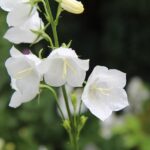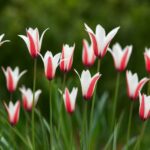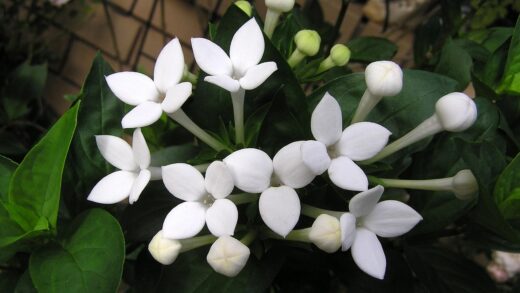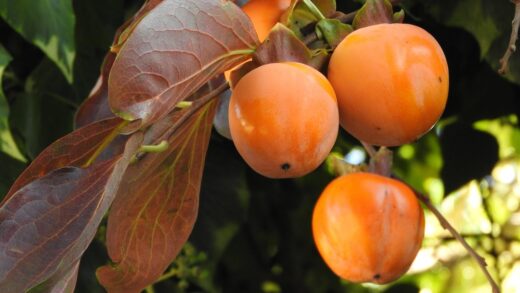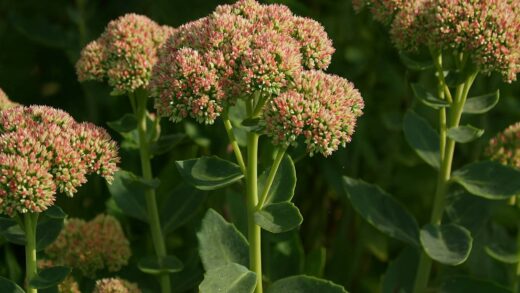The myth of bluebell pruning
The very concept of pruning or cutting back English bluebells in the traditional sense is a fundamental misunderstanding of how these plants grow and sustain themselves. Unlike many garden perennials or shrubs that benefit from being cut back after flowering to encourage a second flush of blooms or to maintain a tidy shape, bluebells have a completely different life cycle. They are ephemeral geophytes, meaning they complete their entire annual growth and flowering cycle in a short period in spring before the leaves of the overhead tree canopy fully emerge. The foliage that remains after the flowers have faded is not just leftover growth; it is the plant’s essential engine for survival.
During the post-flowering period, which lasts for approximately six to eight weeks, the leaves are at their peak of photosynthetic activity. They are working tirelessly, capturing sunlight and converting it into the chemical energy that will be stored in the bulb. This stored energy is the sole resource the plant will have to survive its long summer and winter dormancy and to fuel the growth of both leaves and flowers for the following year. Therefore, any form of ‘pruning’ or cutting back of the green foliage would be akin to removing the solar panels from a solar-powered device before its battery has had a chance to charge.
The urge to tidy up the garden by removing the increasingly untidy-looking bluebell leaves is one that many gardeners feel, but it must be resisted at all costs. Cutting the leaves back while they are still green will starve the bulb of the energy it needs, resulting in a significantly weakened plant. This will inevitably lead to a dramatic reduction in flowering the following year, and if the practice is repeated, it will eventually lead to the death and disappearance of the bulb altogether. The yellowing and withering of the leaves is a natural and vital part of the plant’s lifecycle.
So, to be clear, English bluebells should never be pruned or cut back in the way one would handle a rose bush or a lavender plant. The care they require is one of patience and understanding, of allowing nature to take its course. The focus is not on removal, but on preservation of the foliage for as long as it remains green. This principle is the absolute cornerstone of successful long-term cultivation and ensures the perennial return of their cherished spring display.
Deadheading for bulb health
While the foliage must be left untouched, there is one small cutting task that can be beneficial for the health of English bluebells: deadheading. This is the process of removing the flower stalks after the individual bells have faded and shrivelled, but before they have had a chance to develop seeds. The purpose of deadheading is to redirect the plant’s energy. If left on the plant, a significant amount of energy will be diverted into the production of seeds. By removing the spent flower head, you ensure that this energy is instead channelled downwards and conserved within the bulb for next year’s display.
More articles on this topic
Deadheading can result in slightly larger and more robust bulbs over time, which can lead to an even more impressive floral display in subsequent seasons. It is a particularly useful practice in a garden setting where you are aiming for maximum flower power from your clumps. The process is simple: using a pair of secateurs or even just your fingers, snip or pinch off the flower stalk at its base, where it emerges from the cluster of leaves. Be very careful during this process not to damage any of the surrounding green leaves, as they are the most important part of the plant at this stage.
It is important to note that while deadheading is beneficial for bulb health, it does prevent the plants from self-seeding. English bluebells will naturally spread and form large, naturalistic drifts over time, and this happens through two methods: the production of offset bulbs underground and the dispersal of seeds. If your goal is to encourage your colony to naturalize and spread over a wider area, you may choose to leave the flower heads intact to allow seed pods to form and ripen. The seeds will then be scattered around the parent plant and, after several years of maturation, will grow into new flowering plants.
The decision to deadhead, therefore, depends on your gardening goals. If you have a well-established colony and your primary aim is to maximize the flower quality of the existing plants and prevent them from spreading too rapidly into other areas, then deadheading is a worthwhile task. If, however, you are trying to establish a new, large, and natural-looking swathe of bluebells and have the patience to wait for seedlings to mature, then allowing them to set seed is the better strategy. Many gardeners adopt a hybrid approach, deadheading some clumps while allowing others to self-sow.
The importance of foliage dieback
The period after flowering is the most critical time for the future health of your English bluebell colony. During these weeks, the strap-like leaves are performing the vital function of photosynthesis, creating the food reserves that will be stored in the bulb over the dormant period. It is absolutely essential that the foliage is left completely undisturbed during this time and is allowed to die back naturally. This process is complete when the leaves have turned from green to yellow or brown and have completely withered away. Only at this point have they finished their work of replenishing the bulb.
More articles on this topic
The visual process of the leaves dying back can be a test of a gardener’s patience. The foliage can look untidy and messy as it yellows and flops over, and the temptation to ‘tidy up’ by cutting it back can be strong. However, this temptation must be overcome. Think of the green leaves as the lifeline to next year’s flowers. Each leaf is a small factory, and cutting it off prematurely shuts down production, leaving the bulb with insufficient reserves to survive its dormancy and produce a strong show the following spring. This is the single most common mistake made in the cultivation of bluebells and other spring-flowering bulbs.
To manage the untidy phase, you can employ some clever companion planting strategies. Plant the bluebells amongst later-emerging perennials, such as Hostas, ferns, or Geraniums. As the bluebell foliage begins to fade, the fresh growth of these companion plants will emerge and grow up around it, effectively hiding the dying leaves from view. This creates a seamless transition in the garden border, with the new growth of the perennials taking over the visual space just as the bluebells are finishing their cycle. This allows you to maintain a tidy appearance in the garden without compromising the health of your bulbs.
Once the foliage has completely withered and can be easily pulled away from the ground with a gentle tug, it is safe to remove it. This usually occurs by early to mid-summer. At this point, the bulb has entered its summer dormancy, and the removal of the dead leaves will not cause any harm. The cleared ground can then be covered with a summer mulch, or you can simply allow your other perennials to fill the space. By respecting this natural cycle of growth and decay, you are working in harmony with the plant’s needs and guaranteeing its return for many years to come.
Managing naturalized bluebells in lawns
When English bluebells are naturalized in a lawn or grassy area, the principles of not cutting back the foliage remain the same, but they have specific implications for your lawn maintenance routine. The key to success in this setting is to treat the area as a spring meadow rather than a conventional lawn. This means that the first lawn mow of the season in that specific area must be delayed until the bluebell foliage has completely died back. This is typically not until early July, depending on your local climate and the specific season.
Mowing the area too early, while the bluebell leaves are still green, will have the same devastating effect as cutting them back in a garden border. It will prevent the bulbs from storing the energy they need to flower the following year, and the colony will quickly weaken and disappear. This requires a shift in mindset from aiming for a perfectly manicured lawn throughout the spring to embracing a more natural, wilder aesthetic during the bluebells’ growing season. The reward for this patience is a stunning carpet of blue that a conventional lawn could never provide.
During the flowering period, it is also best to avoid walking on the area as much as possible. Foot traffic can damage the delicate flowers and, more importantly, can crush the leaves and compact the soil around the bulbs. Once the flowers have faded, you can choose to deadhead them if the colony is small and manageable, but for large drifts, it is often more practical to simply let them be. The subsequent yellowing foliage, mixed in with the growing grass, is a sign of a healthy, functioning ecosystem.
Once early summer arrives and the leaves have fully withered, you can then bring out the lawnmower for the first cut of the season in that area. It is often best to set the mower blades to a relatively high setting for the first cut to avoid scalping the ground. After this initial cut, you can gradually lower the blade height and resume a more regular mowing schedule for the remainder of the summer and autumn. This patient, delayed-mowing approach is the only way to successfully maintain a beautiful and sustainable population of bluebells within a lawn.
A summary of cutting practices
To summarize the approach to pruning and cutting back English bluebells, the guiding principle should be ‘less is more’. The most important rule, which cannot be over-emphasized, is to never cut back the foliage while it is still green. The leaves must be allowed to complete their natural cycle of yellowing and withering, a process that is essential for replenishing the energy stores within the bulb. This requires patience and often strategic companion planting to hide the untidy phase, but it is non-negotiable for the long-term health of the plants.
The only form of cutting that is beneficial is deadheading, which is the removal of the spent flower stalks after the blooms have faded. This is an optional task that can help to build a stronger bulb by preventing the plant from expending energy on seed production. However, this practice also prevents the colony from spreading by seed, so the decision to deadhead should be based on your specific gardening goals—whether you want to maximize the vigour of existing clumps or encourage the creation of a larger, naturalized drift.
For bluebells grown in lawns, the no-cutting rule for foliage translates into a delayed mowing schedule. The lawnmower must be kept away from the area until the bluebell leaves have completely died back, which is typically in early summer. This allows the bulbs to complete their energy storage cycle and ensures their return the following spring. This practice is fundamental to successfully cultivating bluebells in a grassy setting.
Ultimately, the ‘pruning’ of English bluebells is an exercise in restraint. It involves understanding the plant’s life cycle and resisting the urge to tidy up prematurely. The only materials that should be removed are the faded flower stalks (if you choose to deadhead) and the completely dead, withered foliage at the end of the season. By following these simple but crucial guidelines, you will be rewarded with an ever-improving display of one of the most enchanting sights of the spring garden.










